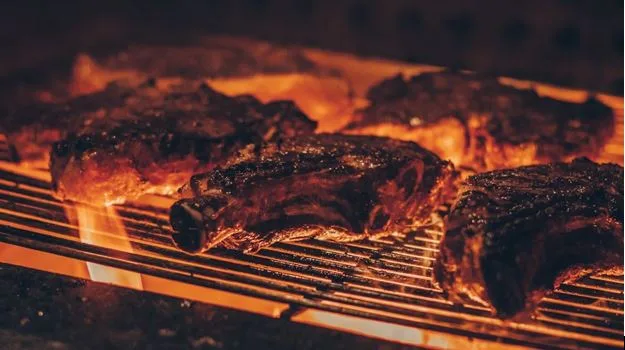Why Tasting Local Food Is the Best Way to Know a Place
Many travelers make the mistake of visiting a new place without ever truly experiencing it. They stop at a few tourist attractions, take photos, and maybe buy a souvenir, but they leave without really knowing what the town or city is about. What they miss is the most direct path to understanding a destination—its food.
Take Sevierville, Tennessee, for example. Most people know it as a gateway to the Smoky Mountains. But those who take time to sit down for a meal at a local spot discover something deeper. The food on their plate tells them about the history of the area, the traditions that have been preserved, and the way the community values time together. Food turns a simple trip into a cultural experience.
This article explores why tasting local food is the best way to know a place.
Food Shows What People Value Most
When you look at the menu of a local eatery, you see more than a list of dishes. You see priorities. Some communities celebrate fresh seafood, while others highlight farm produce or slow-cooked meats. The way food is prepared, the portion sizes, and even the sides chosen show what locals care about.
In Sevierville, smoked meats and hearty homemade sides are central. They reflect a value placed on family gatherings and on meals that bring people together. By tasting these foods, travelers understand that Sevierville values tradition, comfort, and generosity.
Authentic Flavor Leaves Lasting Memories
People often forget the fine details of a trip, but meals have a way of sticking in memory. This is because taste and smell are closely tied to memory, making food a powerful part of travel.
Eating something you can’t find at home creates an experience that stands out.
That’s why Sevierville restaurants often leave such a lasting impression. A place like Buddy’s bar-b-q, with its hickory-smoked meats and long-standing family recipes, gives travelers more than just a good meal. It offers flavors tied to the community’s history, the kind of experience that stays with you long after the trip is over.
Local Food Carries Generations of Stories
When you eat at a local restaurant, you’re not just eating today’s meal. You’re often tasting something that has been part of the community for generations. Many recipes in small towns have survived for decades, sometimes longer. They are part of family traditions that locals refuse to let go of.
This continuity is what makes dining out locally so special. A visitor may not know the family that created the recipe or the full history behind it, but they still experience the result of years of care. Food becomes a way to share stories without words. For travelers, this is a chance to connect with history in a direct and personal way.
Food Reflects Geography and Landscape
The land shapes what people eat. Local food often depends on what grows nearby, what livestock thrives, and how the climate influences preparation methods. In coastal towns, seafood is everywhere. In farming regions, fresh vegetables and dairy dominate. Mountain towns often turn to smoking or curing meat as part of their culinary tradition.
Sevierville is a good example of this. Surrounded by the Smoky Mountains, the town developed cooking methods that relied on smoking meat and preparing hearty sides. These foods were practical for the environment, but they also became a lasting tradition. Geography explains why certain foods become iconic in one area and rare in another. Travelers who eat locally can see and taste this direct link between land and cuisine.
Shared Meals Create Connections With Locals
One of the simplest ways to meet and connect with locals is by sharing a meal in the places they frequent. Tourist-heavy spots often separate travelers from residents, but small local restaurants bring everyone together. Eating where locals eat gives you a chance to interact with people in a natural setting, even if it’s just a brief conversation with a server or a smile from the table next to yours.
Food has always been central to community life. When you step into a local eatery, you see the town in its most natural state—families eating together, friends catching up, and traditions being carried on. For a traveler, these small observations offer insight that no guidebook can provide. The meal becomes both nourishment and a way to feel part of the community, even if just for an hour.
Supporting Local Food Helps the Community Thrive
Where travelers choose to eat has a direct impact on the community they visit. Spending money at chain restaurants sends most of the profit elsewhere, but eating at a family-owned spot keeps money in the local economy. This helps create jobs, supports local suppliers, and strengthens the food culture of the area.
In small towns, local restaurants often serve as community anchors. They provide consistent meals, sponsor local events, and maintain traditions that larger chains don’t prioritize. Travelers who choose local food not only enjoy a unique experience but also contribute to the survival of those traditions. Supporting these restaurants is one of the easiest ways to give back to the places you visit.
Food Lets You Experience Tradition Without Needing a Guidebook
Travelers often spend hours reading about a place before they visit, but sometimes the best way to learn is simply by sitting down to eat. The dishes on the table can tell you what is grown in the area, what flavors the locals enjoy, and what customs shape their meals.
For example, when you see coleslaw served alongside smoked pork or potatoes stuffed with barbecue toppings, you are learning about the habits and taste preferences of the region. Even small details, such as portion size or seasoning, tell you something about the local culture. Without reading a single page of history, you can gain insight into daily life just by paying attention to the food.
Travel is often about sights, but food tells the deeper story. Tasting local meals reveals what communities value, how they live, and what traditions they continue to protect. Every dish is tied to geography, history, and daily life. Travelers who make time for local food walk away with more than just full stomachs—they carry a better understanding of the place they visited.
The next time you plan a trip, skip the chain restaurant you could find at home. Instead, look for a spot where the food comes from family recipes or long-standing traditions. A meal shared in a local setting may become the most memorable part of your journey, and it will give you a truer sense of the place you came to explore.




